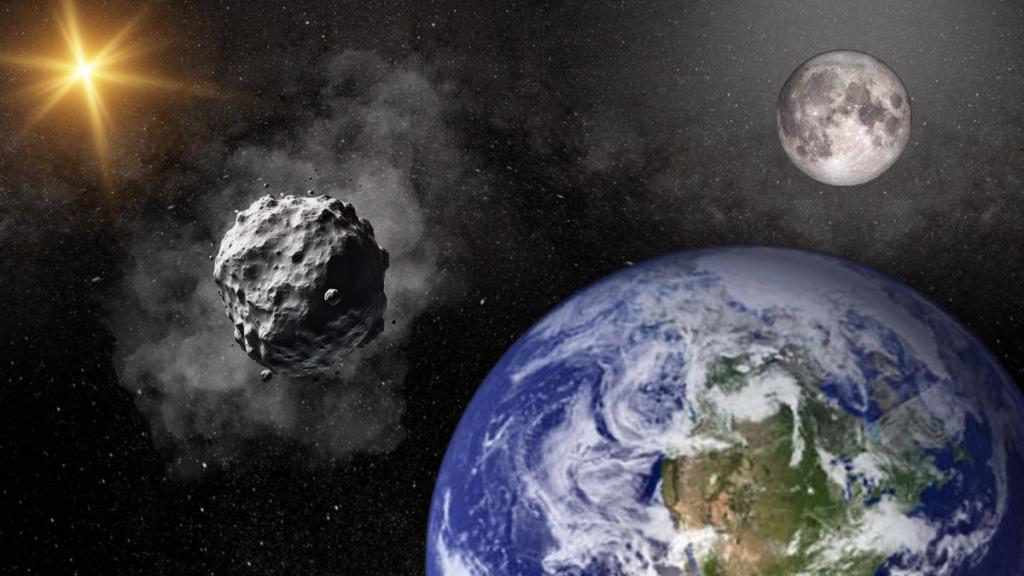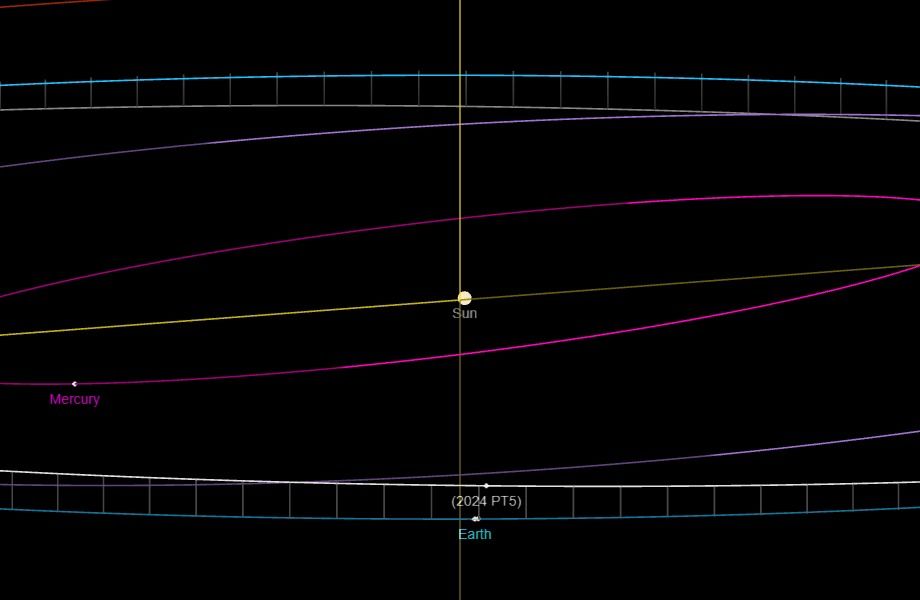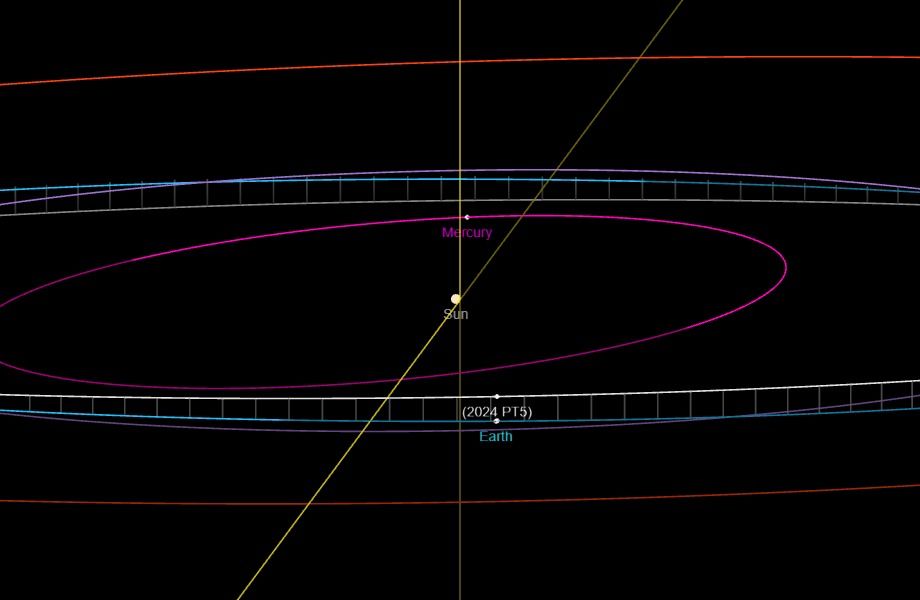
Earth will capture ‘second moon’ this weekend, scientists say (Image Credit: Space.com)
NASA scientists have calculated that Earth will capture a “second moon” on Sunday (Sept. 29). The “mini-moon” comes in the form of the tiny asteroid 2024 PT5, which usually orbits the sun as part of a small asteroid belt that follows Earth.
While Earth’s primary companion, the moon, has lingered around our planet for around 4 billion years since its formation in the solar system‘s infancy, this asteroid will be a temporary fixture that won’t even see the year out.
“According to the latest data available from NASA’s Jet Propulsion Laboratory Horizons system, the temporary capture will start at 15:54 EDT (1954 UTC) and will end at 11:43 EDT (1543 UTC) on November 25,” mini-moon event expert and Universidad Complutense de Madrid professor Carlos de la Fuente Marcos told Space.com on Wednesday (Sept. 25).
“The object that is going to pay us a visit belongs to the Arjuna asteroid belt, a secondary asteroid belt made of space rocks that follow orbits very similar to that of Earth at an average distance to the sun of about 93 million miles (150 million kilometers),” Marcos told Space.com last week. “Objects in the Arjuna asteroid belt are part of the near-Earth object population of asteroids and comets.”
Though the idea of Earth getting a second moon sounds extraordinary, these gravitational capture events are actually quite common.
Related: Earth will get another moon this month — but not for long!
“Some Arjuna asteroid belt objects can approach Earth at a close range of around 2.8 million miles (4.5 million kilometers) and at a relatively low velocity of less than 2,200 miles per hour (3,540 km/h),” Marcos explained. “Asteroid 2024 PT5 will not describe a full orbit around Earth. You may say that if a true satellite is like a customer buying goods inside a store, objects like 2024 PT5 are window shoppers.”
After its brief stay around Earth, the asteroid 2024 PT5 will continue to orbit the sun as part of the Arjuna family of asteroids.

2024 PT5 isn’t the first asteroid to be captured by Earth to be transformed into a mini-moon. Scientists have officially documented two prior “short captures,” a type of asteroid-grabbing event lasting about a week and estimated to occur several times per decade. We also know of two prior rarer “long-capture” events that can last years rather than weeks that lead to snared asteroids completing one or more full orbits of Earth.

The fact that asteroid 2024 PT5 will stick around for just a few weeks, as opposed to billions of years, isn’t the only major difference between this “mini-moon” and the actual moon.
Whereas the moon dominates the night sky over Earth for at least half the month, 2024 PT5 won’t be observable to the average skywatcher. However, professional astronomers may be able to grab us some images of this temporary alignment.
This is mostly due to the massive difference in size between the two bodies. While the moon is an estimated 2,159 miles (3,475 km) in diameter, 2024 PT5 is believed to be just 37 feet wide. That means the moon is a whopping 308,108 times wider than the lunar pretender asteroid 2024 PT5!
“The object is too small and dim for typical amateur telescopes and binoculars. However, the object is well within the brightness range of typical telescopes used by professional astronomers,” Marcos concluded. “A telescope with a diameter of at least 30 inches plus a CCD or CMOS detector is needed to observe this object; a 30-inch telescope and a human eye behind it will not be enough.”
The team’s research is published in the journal The Research Notes of the AAS.





